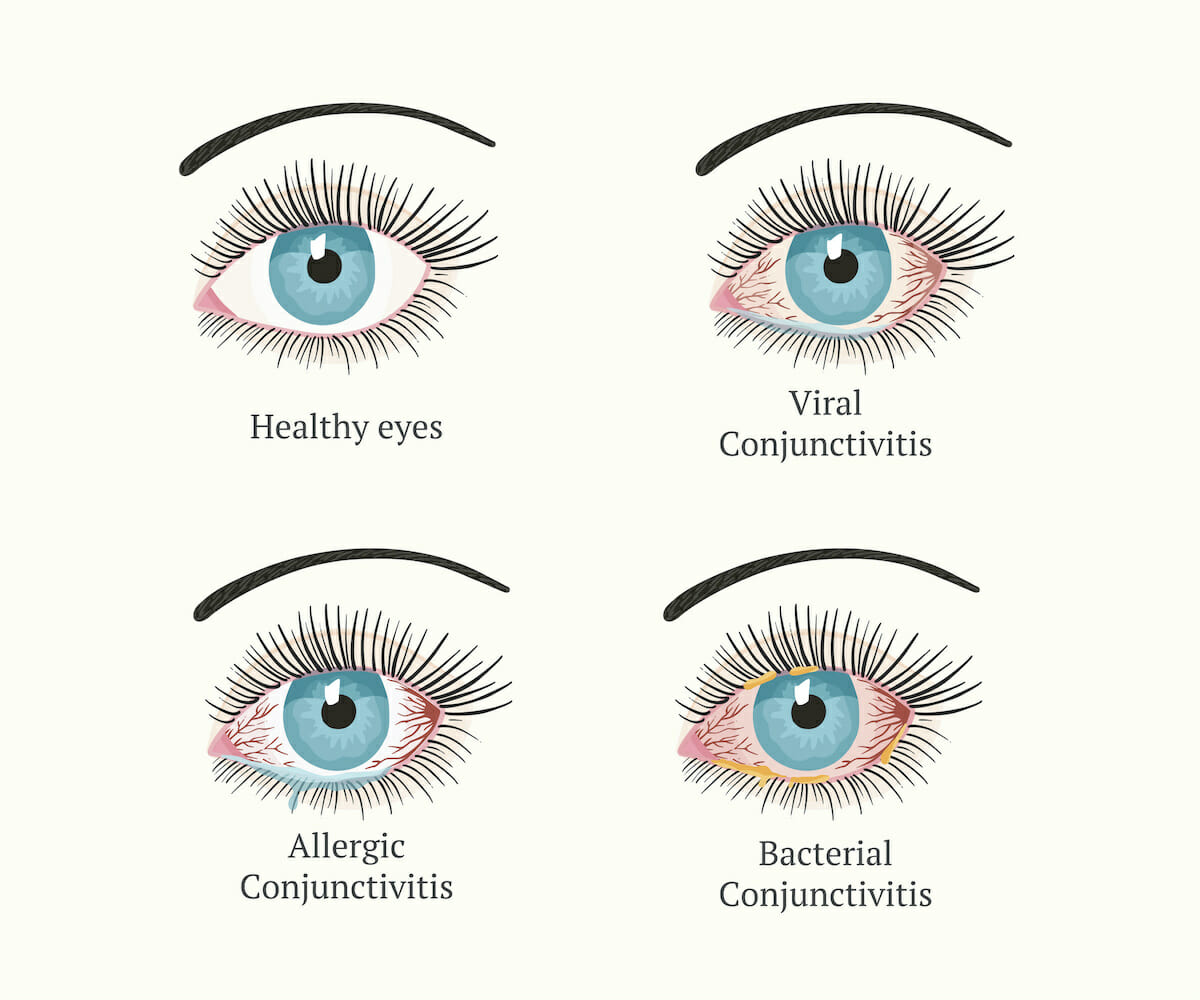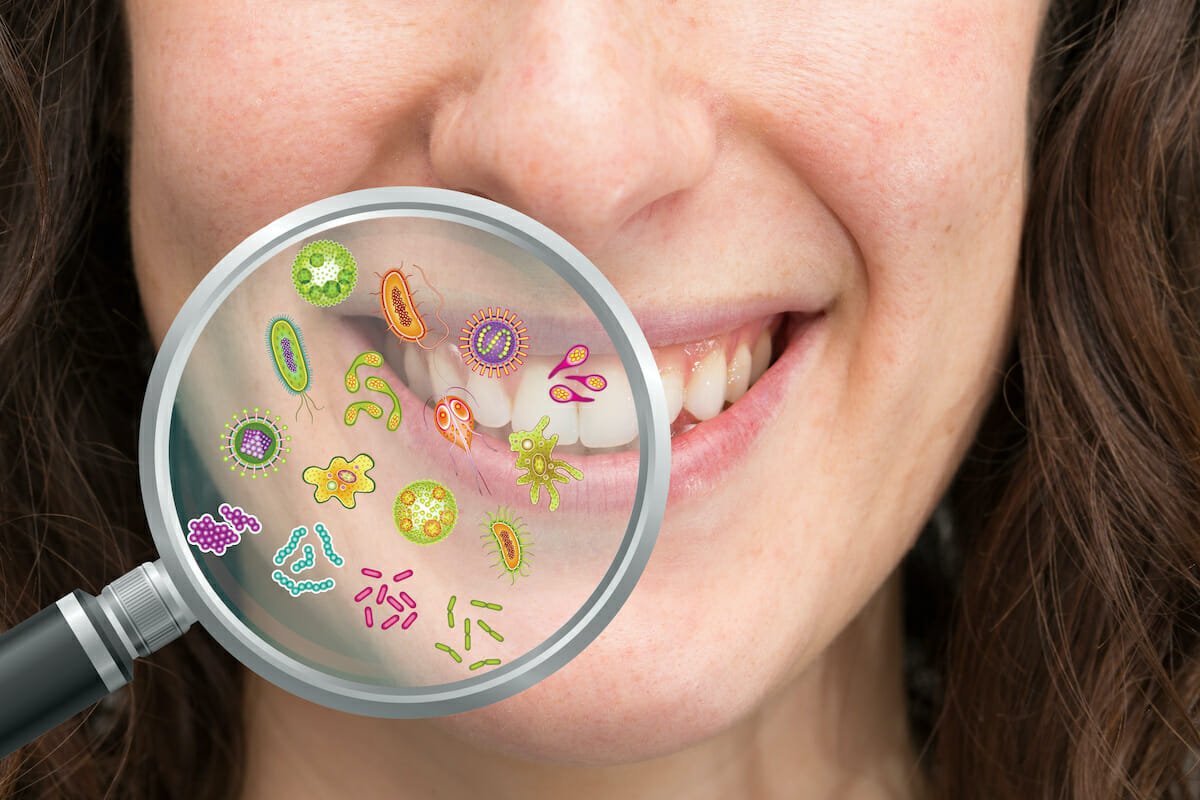
Pink eye or conjunctivitis causes painful, red, and itchy eyes. Viral and bacterial pink eye are highly contagious. Anyone with pink eye due to infection should stay away from work or school until symptoms clear.
The time it takes for pink eye to clear up will depend on the type. It often resolves in 7–10 days, but some people may need treatment.
Treatment for bacterial conjunctivitis is with antibiotics. Most people will need antibiotic treatment for 5–7 days. A doctor will advise on when to return to work or school, but people should not attend if they have symptoms and will be working closely with others.
Pink eye caused by a virus is usually highly contagious for 10–14 days.
Pink eye that results from an allergy is not contagious and will typically clear after a person moves away from the allergen.
Allergic, viral, and bacterial are three types of pink eye, but eye inflammation can happen for other reasons.
Allergic pink eye
Around 40% of the population may be prone to allergic conjunctivitis, when the eye reacts to allergens, such as:
- grass
- animal dander
- dust
- mold
- pollen
- ragweed
Exposure to chemicals such as chlorine can also lead to symptoms.
Allergic conjunctivitis is not contagious. It will resolve more quickly if a person can move away from the allergens that cause the reaction. Some people may need eye drops or other medication to keep allergic conjunctivitis at bay.
Viral pink eye
Viruses responsible for pink eye include:
- Adenovirus: This accounts for up to 90% of cases.
- Herpes simplex virus (HSV): HSV is likely responsible for 1.3–4.8% of cases.
- Acute hemorrhagic conjunctivitis: Less common but highly contagious, this is passed on by hand-eye contact and possibly touching surfaces where the virus is present.
- COVID-19: Between 1% and 6% of people with this Covid virus develop pink eye. The virus may transmit through contact with eye tissues and discharge.
Viral pink eye can:
- stem from an infection that spreads from the nose to the eyes
- spread from one eye to another
- transmit via droplets from a cough or sneeze
- result from an upper respiratory infection or cold
- occur with other symptoms, such as a fever and body aches, depending on the cause
Viral pink eye is highly contagious for 10–14 days and can take 14–30 days to disappear.
Bacterial pink eye
A mild bacterial pink eye infection usually lasts about a week or 10 days without treatment. With treatment, it should start to improve after 3–4 days of starting antibiotics. A person must take the whole course of antibiotics, or it may recur.
If pink eye does not improve quickly with antibiotic drops, it is likely to be viral rather than bacterial pink eye.
Seven signs pink eye is contagious
When the symptoms of bacterial or viral pink eye symptoms are present, the condition is likely to be contagious. Seven signs of conjunctivitis are:
- discharge from the eyes or sticky eyes
- crusty eyelashes and lids
- swelling around the eyes
- burning sensation
- tearing up
- red or pink in the whites of the eyes
- irritation or grittiness in the eyes
A day care, school, or workplace may ask a person not to return until their symptoms have cleared.
How does pink eye transmit?
Viral or bacterial pink eye can spread from one person to another through:
- sharing personal hygiene or other items
- shaking hands or other close personal contact
- using unclean or old makeup that has collected bacteria
- touching the eye with dirty hands
- using contact lenses where pathogens are present
- touching items where bacteria or viruses are present and then touching the eyes
- coughing and sneezing
- touching an infected eye and then the other eye
Pink eye can also be a symptom of an underlying viral or bacterial infection that may be contagious, such as COVID-19 or gonococcal or chlamydial infections.
Will pink eye go away on its own?
A mild bacterial or viral pink eye infection may take 1–2 weeks to resolve without treatment, but it can take up to 30days. If pink eye persists after this time or does not respond to treatment, a person should speak with their doctor.
When is it safe to return to work or school?
If pink eye is infectious, a person should not usually spend time in close contact with others, such as work or school, until symptoms clear. A doctor can advise when it is safe to return to everyday activities.
How long do pink eye bacteria or viruses live on surfaces?
Bacteria that cause pink eye usually live on surfaces for only 2–8 hours, but some can remain active for 2 days or longer. Viruses last longer, often for 24–48 hours, but some are still effective on surfaces for up to 8 weeks.
In summary, though common and sometimes painful, pink eye is not often a major concern. If an infection is present, people should avoid others until symptoms clear, as it can be very contagious.
Most people can return to work, school, or day care once symptoms have cleared. Often, pink eye goes away on its own, but treatment can help manage discomfort, and antibiotics may clear a bacterial infection more rapidly.









